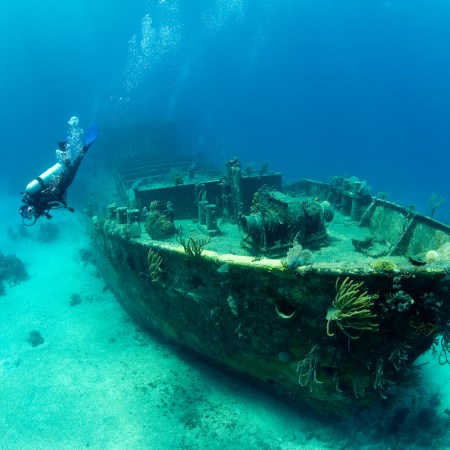Archaeologists have uncovered the wreck of a 2000-year-old Roman ship in the Mediterranean Sea — and as CNN reports, at 110 feet, it’s the largest classical shipwreck to ever be found in the eastern Mediterranean.
The ship, dated between 100 BCE and 100 CE, was carrying 6,000 amphorae — or large terracotta pots used to transport wine and olive oil during the Roman Empire — and discovered off of the coast of Kefalonia, an island off the west coast of Greece.
The discovery is the fourth largest wreck from the period ever found in the Mediterranean as a whole, and according to George Fereninos of the University of Patras, who wrote about the shipwreck with nine of his colleagues in the Journal of Archeological Science, it is of “significant archaeological importance.”
“The amphorae cargo, visible on the seafloor, is in very good state of preservation and the shipwreck has the potential to yield a wealth of information about the shipping routes, trading, amphorae hull stowage and ship construction during the relevant period,” the archaeologists wrote.
“Further study of the wreck would shed light on sea-routes, trading, amphorae hull stowage and shipbuilding in the period between 1st century BC and 1st century AD,” they added.
Subscribe here for our free daily newsletter.
Thanks for reading InsideHook. Sign up for our daily newsletter and be in the know.


















